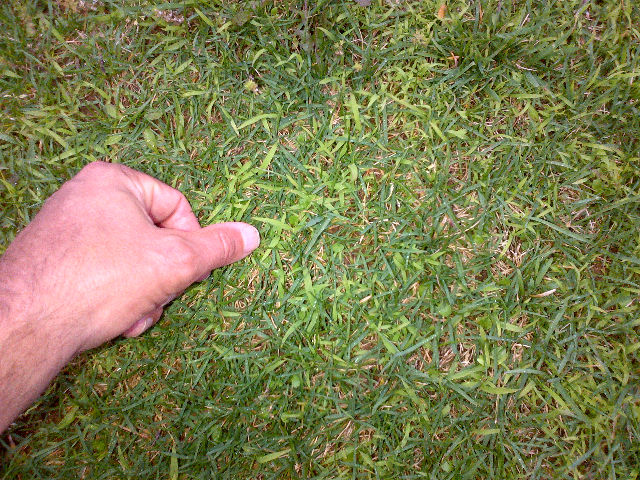Main Content
 I have been observing the emergence of crabgrass since late April (see image above). Some crabgrass has now entered the tillering stage of growth.
I have been observing the emergence of crabgrass since late April (see image above). Some crabgrass has now entered the tillering stage of growth.
As a general rule, most people begin to notice crabgrass in turf around the 4th of July (Independence Day). At that time, the crabgrass plants are large enough that the leaves stick-up above the desired grasses and the lighter (yellow) green color is highly noticeable from a distance. However, the crabgrass plants will be relatively large (tillered) by that date.
For those that want to control crabgrass postemergence, the next few weeks is the time for action because, regardless of the control tactic, crabgrass becomes more difficult to remove as it matures (get larger).
For those interested in non-chemical options, hand-picking the crabgrass is easiest when the plant are relatively small seedlings. As the plants grow, the enlarged root system makes it more difficult to pull these plants without snapping off the leaves and leaving the crown attached to roots. If this happens, the plants will re-grows its leaves. Hand-picking crabgrass plants is only practical for small turf/lawn areas.
There is limited detailed information the application and efficacy of “organic” herbicides to control crabgrass postemergence. So specific recommendations, other than make treatments to small plants, are not available.
For those interested in conventional postemergence herbicides, these are most effective when applied to seedling crabgrass plants. Two, sometimes more, treatments are often needed, especially when crabgrass plants are relatively large. Apply at 7-to 10-day intervals. Do not apply to drought stressed plants. Discoloration may occur on the desired turfgrass after the treatment is applied. Discoloration is generally more noticeable if the grass is under stress from heat or drought. Spraying the herbicides will be more effective than applying as a granular product. Do not irrigate for 24 hours after the appliation and do not apply if rain is forecast within 24 hours after the application.
Herbicides with postemergence activity on crabgrass that is less than the 4-tiller growth stage include: quinclorac (Drive, SquareOne ), mesotrione (Tenacity), and fenoxaprop (Acclaim Extra). Dithiopyr (Dimension) is primarily used as a preemergence herbicide but it does have postemergence activity on crabgrass plants in the 1- to 4-leaf growth stage.
The use rates and tolerance of desired turfgrasses varies among these herbicides, so consult the label for specific use information. You can also read more at: Crabgras and Goosegrass Control in Cool Season Turfgrass.